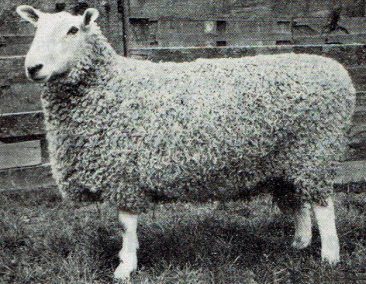
Modern Border Leicester Sheep
In 1862, John Wilson of Edington Mains, Berwickshire, described Luke Scott in a paper he wrote for the Royal Highland and Agricultural Society of Scotland:
About 35 years ago, and for many subsequent years, there existed a small flock of Leicesters, the property of Mr. Luke Scott, formerly tenant of Easington Grange, near Belford, which I knew well, and which in several respects may be said to have been unique. Mr. Scott, though a steady and upright man, had not prospered in business. From ever I knew him he had no farm of his own, and his little flock, numbering some twenty ewes and their produce, to which he clung with fond affection and an almost desperate tenacity, was boarded out, sometimes in one place and sometimes another. He has often told me that the foundation of this stock was laid by the purchase of a few shearling ewes from Mr. Yellowly, then in good repute as a breeder of pure Leicesters. As long as Mr. Robert Thompson of Chillingham Barns continued a breeder, Mr. Scott used only his rams and for the next 20 or 25 years which elapsed after Mr. Robert Thompson’s retirement from business and the final breaking up of Mr. Scott’s little flock, the latter was maintained entirely by the use of his own rams. I recollect of his telling me how a favourite ewe had made her escape from the enclosure in which she was confined, and had got access to a ram of a neighbouring flock. Most persons would have thought it enough in the circumstances to have sold or destroyed the progeny of this mesalliance; but so irremediably did the old man consider his ewe to be contaminated, that, favourite as she was, he caused her to be slaughtered. Mr. Scott let out on hire as many rams as he could, but never sold either male or female except to be slaughtered.
Wilson went on to describe Luke Scott’s sheep, of a type which later became known as Border Leicesters:
Their faces and legs were invariably white- as much so as any Cheviots. Their wool formed a close-set, compact fleece. The rams carried their heads well up, being strong and full in the neck-vein, and remarkably wide in the chest. They were particularly clean in the legs, and seldom suffered foot-lameness. They were vigorous and active and in token of this were pugnacious to a fault, being more troublesome in this respect than rams of any breed of sheep I have ever had anything to do with. Owing to their own purity of breeding, they possessed in a remarkable degree the capacity of imparting their own characteristics to every flock into which they were introduced. …………… there is probably no Leicester flock on the Borders of any considerable reputation that has not this blood largely in it!
The importance of these sheep was that, through selective breeding, Luke contributed to the much needed improvement of the sheep stock of the area, previously been described in this way:
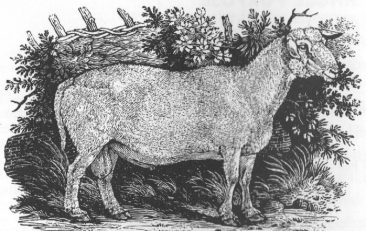
Bewicks engraving of the unimproved breed
among all the numerous bad breeds then to be found I do not remember to have seen any so completely ugly. Their wool grew down to their very toes; their loins were high and narrow; their shoulders sharp and hollow; their sides flat; their wool short and not at all fine.
Luke’s animals made a major contribution to sheep farming, not only in North Northumberland and the Borders, but across the world. David Archibald of Awa Moa, Otago, New Zealand credited Luke Scott with the development of the Border Leicester breed, then adapting successfully to New Zealand, and these sheep were also imported into Australia, the USA and Canada, as well as Japan and South Africa.
So who was Luke Scott?
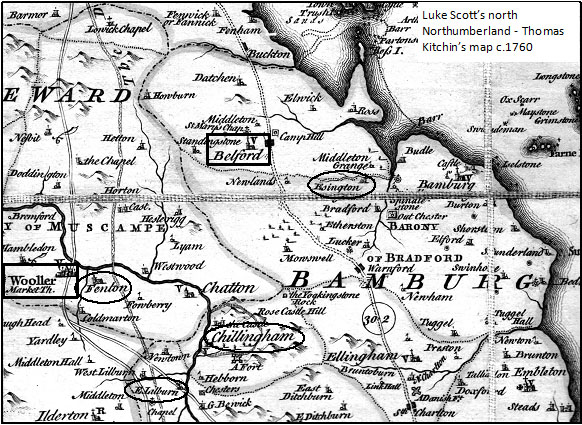
Luke Scott’s north Northumberland c.1760
Luke’s grandparents, John Scott, a small leasehold farmer, and his wife Elizabeth, brought the family to the Easington Grange area, in about 1750. There were three children, Luke, who became a successful jockey, and twins James and Jane. Sadly, Luke aged only 30 died at York Races in 1764, but his estate – goods chattels and £500, boosted the family fortunes. In the 1770s, when John, went to live with his daughter at Stanhope, James took over the farm, in time assisted by his own son Luke. By the 1790s, Luke was playing a significant part in the farm, arranging loans on behalf of his father, and by 1799 he has leased lands at Easington on his own behalf. It was possibly there that Luke began his sheep breeding experiments. When his father died in 1804, Luke continued to run all the Easington lands until the expiry of the lease in 1811. By then Luke had acquired a reputation as breeder of valuable sheep, as is shown in an 1809 advertisement:

In 1811, Luke decided to concentrate solely on sheep breeding, making money by hiring out his rams, and sold off all the general farm equipment. By now his reputation as a sheep breeder was such that in 1812 he was a judge at the Tweedside Agricultural Society’s Show.
Exactly where Luke kept his sheep in the succeeding years remains unclear. Possibly he farmed at Fenton Town Farm up to 1820, but from then on, as Wilson’s article said they were sometimes in one place and sometimes in another. By 1841, he and his flock seems to have been living with his son Robert at Plea Place, East Lilburn. He was certainly there In 1845, when Robert decided to move to the south of England, and a flock of 30 ewe sheep, gimmers and ewe lambs was put up for sale on 16 October, with the following description:
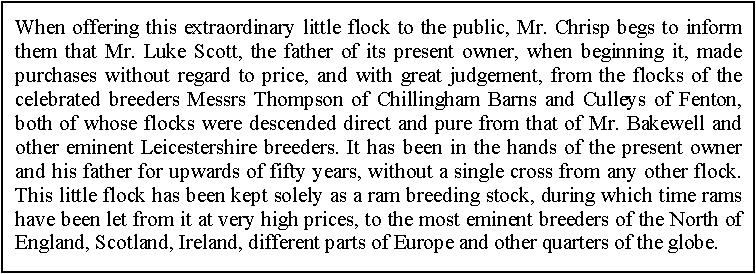 Although the ewe flock had been sold, Luke did not move south with his son, and continued to advertise his Rams for hire, as this advertisement from the Newcastle Journal on 2 September 1846 shows.
Although the ewe flock had been sold, Luke did not move south with his son, and continued to advertise his Rams for hire, as this advertisement from the Newcastle Journal on 2 September 1846 shows.

Luke finally died at his son Robert’s place, Wessington Court, near Hereford, 25th November, 1849.
One of the inheritors of Luke Scott’s careful breeding was the flock of sheep set up at Rock in north Northumberland in 1849. One of its rams – Sir Walter, went on to win the coveted first prize at the first Highland and Agricultural Show in Edinburgh in 1869.
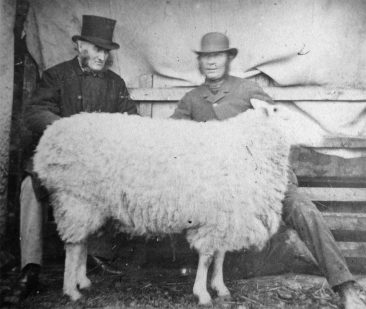
Sir Walter” shown at the first Highland & Agricultural Show Edinburgh (1869) by Rev. R.W. Bosanquet, Rock. 1st in the not above 4 shear class
Courtesy of J. Bosanquet





No Comments
Add a comment about this page